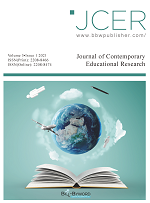Abstract
With the continuous demand of material performance, the development of materials is rapid, and the professional curriculum teaching of “new inorganic materials” as well as its teaching methods related to the internet mandate a reform, in order to meet the needs of innovative high-quality personnel training. The update and optimization of the teaching content and methods assisted by the internet meet the needs of modern teaching and research work. More than 90% of students believe that internet teaching is conducive to the understanding of classroom knowledge and the development of innovative projects.
References
Hedan B, Robert FS, 2021, The New Material Science of Robots. Current Opinion in Solid State and Materials Science, 25(2): 1-6.
Rahul S, Pramod KS, Bhattacharya B, et al., 2019, Review of Current Progress in Inorganic Hole-transport Materials for Perovskitesolar Cell. Applied Materials Today, 14: 175-200.
Xie S, Liu Y, Wu Z, et al., 2015, Application of Inorganic Layered Materials in Electrochemical Sensors. Chinese Journal of Analytical Chemistry, 43(11): 1648-1655.
Nagaraj PS, Savio D, Kakarla RR, 2019, Nanostructured Organic and Inorganic Materials for Li-ion Batteries: A Review. Materials Science in Semiconductor Processing, 104: 104684.
Wu P, 2017, Development and Trend of the Technology and Industry for New Inorganic Nonmetallic Materials. Technology Outlook, 29: 96.
Zhang M, 2004, The Compiling Principles of Improving the Quality of College Teaching Materials. Journal of Zhejiang University (Humanities and Social Sciences Edition), 34: 44.
Hu H, Wu Y, E Y, et al., 2019, The Dual Balance between Teaching and Learning in the New Situation of Teaching Reform – The Reform of Classroom Teaching and the Development of Students, Education Modernization, 6: 33-35.
